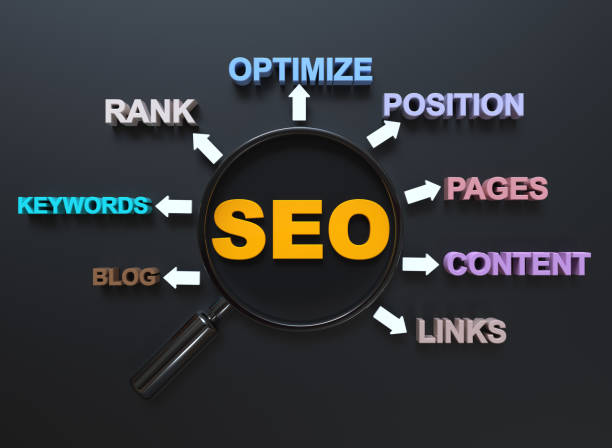PPC Advertising remains one of the most powerful techniques to maximize ROI for business. With a constantly changing digital environment, keeping ahead of trends and optimizing PPC campaigns is an important success factor. With the coming in of 2025, marketers have now different opportunities and challenges that call for a strategic approach. In this blog, we will discuss proven tips to ensure maximization of your PPC campaigns, achieving better ROI with intelligent data-driven strategies.
1. Set Clear and Specific Goals
Setting clear and specific goals may be arguably one of the earliest critical steps toward maximizing ROI on any campaign. If you are trying to scale traffic to your website, generate leads, or sell products, your goals will influence considerations linked to your campaign. Broad and generic objectives, such as “increase traffic,” stand too vague and give little in the way of a defined structure for optimization. Rather, set measurable targets such as “increase sales through the website by 20% in one quarter,” or “generate 50 high-quality leads per week.”
By setting clearly defined, actionable goals, these become anchors on which to establish your PPC campaigns, ensuring that every one of them is contributing to the attainment of the goals you have set for yourself. And, in addition, these goals will assist you in evaluating how things are working and making the necessary changes that will ensure the highest profitability.
2. Understand Your Audience with Data
Be sure to make inquiries from reliable online sources about customer expectations in 2025. The demand for better service has become so high that data plays a more prominent factor in understanding the audience. PPC platforms come with inclusive audience insight to better shape your campaigns: consider demographics, location, behavior, and interests to better align your ads with your ideal customer profile.
And segmentation allows customers to have different personas and to customize ads. So you can guarantee the relevance of your messages, thus creating high CTR and conversion rates. In this case, it will be reduced because of the target audience, thus maximizing your ROI by wasting fewer amounts in ads.
3. Leverage AI and Automation Tools
Changing the PPC advertising industry is artificial intelligence (AI) and automation that will seem to be an easy bet for businesses to optimize their campaigns and get better ROIs. In 2025, greater numbers of PPC platforms will feature robust AI tools, enabling automatic bid adjustments, intelligent target optimizations, and real-time refinements of ad creatives.
Having campaigns power via automated bid strategies, for example, target CPA (cost per acquisition) or target ROAS (return on ad spend), ensures that one’s campaigns are always working to get the most from them. AI tools also recognize patterns and trends in data, which can support better-informed decision-making and the pretty swift modification of strategies, enabling time and money savings.
4. Test and Optimize Your Ads
PPC performance enhancement hinges on continuous testing and fine-tuning. Classic examples of conduct crafts are A/B testing of ads, landing pages, and targeting criteria. This tells you what works best for a certain audience. To explain, for instance, you have tested two variations of an ad with two different headlines or CTAs to know which of them would perform better.
Optimizing your ads will ensure that your ad budget is being spent wisely. Over time, the cumulative effect of these very small changes could become a major improvement in terms of click-through rate, conversion rate, and, eventually, ROI.
5. Refine Your Keyword Strategy
Maintenance of relevant or effective keyword management remains a major very good driving force in the success of almost all PPC Campaigns. According to marketers in 2025, they will be using more long-tail keywords having a lesser competition ratio and a larger conversion percentage. Precisely, long-tail keywords highly indicate user intent, thus making the advertisements much more relevant to the users and increasing the chance of conversion.
The above point is about targeting the right keyword; it also includes continuous analysis of the performance of your keywords. For example, if you noticed that one or two of your keywords were not performing well, you would then put them in suspense and allocate your budget on the ones that are doing great. Also, negative keywords should be used in order to eliminate unnecessary traffic from ad spend.
6. Optimize Your Landing Pages
PPC ads can shine at the top of the game, yet a landing page that does not resonate well may send quite a few conversions packing. This is where a landing page that works the magic of transforming visitors into leads or customers can do wonders for your ROI. A landing page must correspond with the ad copy and give the user a seamless experience.
Provide fast load speed, clear calls to action, and a user-friendly design that inspires visitors to take action. Apply all of the persuasive elements available, from testimonials and case studies to trust signals, to overcome credibility issues and increase conversion. Mobile optimization also deserves special mention, as newer statistics show that greater amounts of traffic originate from mobile devices.
PPC ads can shine at the top of the game, yet a landing page that does not resonate well may send quite a few conversions packing. This is where a landing page that works the magic of transforming visitors into leads or customers can do wonders for your ROI. A landing page must correspond with the ad copy and give the user a seamless experience.
Provide fast load speed, clear calls to action, and a user-friendly design that inspires visitors to take action. Apply all of the persuasive elements available, from testimonials and case studies to trust signals, to overcome credibility issues and increase conversion. Mobile optimization also deserves special mention, as newer statistics show that greater amounts of traffic originate from mobile devices.
7. Monitor and Adjust Your Campaigns Regularly
Ongoing review and refining of PPC campaigns are crucial to ensure correct allocation of budget. Review of your campaign performance is paramount, even with automated tools in place. Check the key metrics- CTR, conversion rate, and cost per conversion at the minimum- to identify your campaign drivers and where improvements are necessary.
For example, if one of your ad groups performs well on the CTR but the other ad group is not, you might want to shift more budget toward the high-performing ad group. Also, raise and lower bid levels according to what the performance of each campaign has indicated so far, helping you to put more resources where you feel higher returns are likely to be earned.
8. Use Remarketing to Capture Lost Opportunities
Not everyone who arrives at your landing page through a PPC ad converts at the drop of a hat. Remarketing helps you re-engage your visitors, reminding them of your work and encouraging them to finish up their purchase or conversion.
Remarketing strategies in 2025 are more advanced than ever, with platforms offering dynamic ads that show products or services based on the user’s last interaction with your site. By going after the users interested in your offerings, you can have a higher chance of getting those conversions, giving your PPC spend a good return on investment.
9. Keep an Eye on Competitor Strategies
Knowing your competitors’ strategy will be important in formulating your own PPC campaigns. Review their ad copy, keywords, and bidding strategy to discover differentiation opportunities. Competitive intelligence tools can help you stay ahead and target gaps in the market.
Out-right copying competitors is not an option, but studying their plans can provide insight into trends that optimize strategies for better ROIs. This is particularly important in competition industries where the lifeblood depends on clicks.
Conclusion
A successful PPC campaign requires strategic planning, intelligent decisions based on data, and regular optimizations. The keywords are to set clear goals, to thoroughly know your audience, to avail yourself of automation tools, and finally, to keep improving your strategies. That means your campaigns will be delivering great results. In this manner, PPC has proven to be one of the most cost-effective and powerful channels for driving growth and achieving objectives associated with such businesses.
And if you stay nimble in your campaign management, you will be well poised to apply these tried and true strategies to the ever-changing world of digital advertising and find long-term success.










